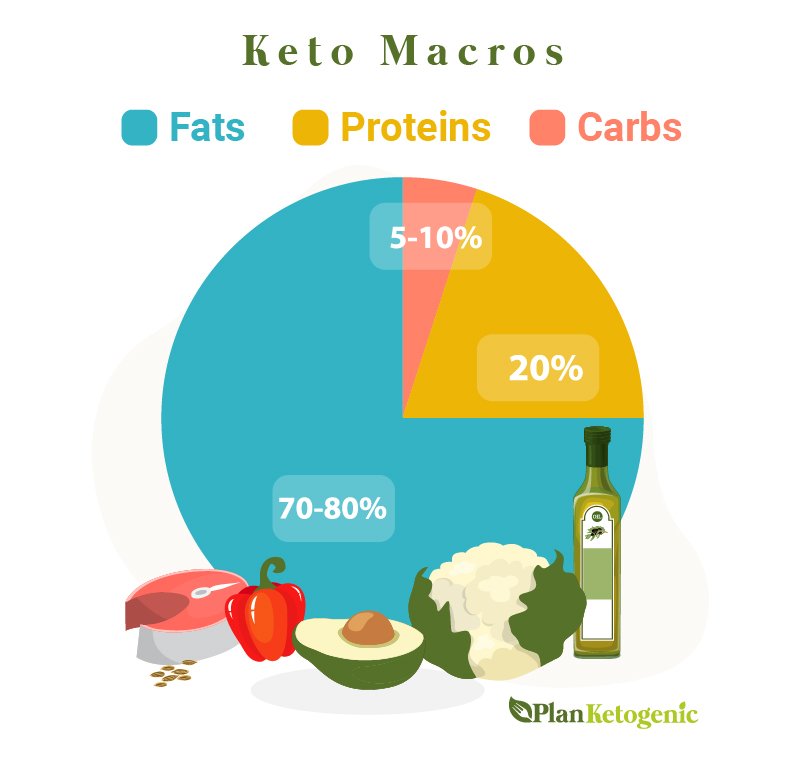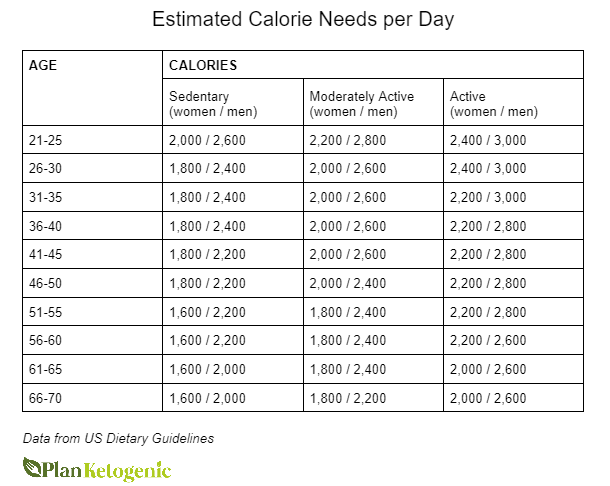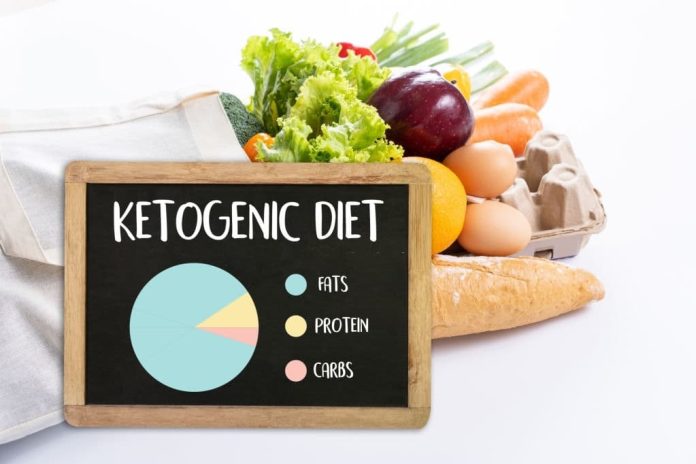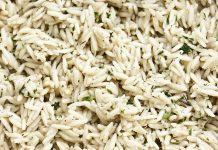If you are curious about starting a keto diet, there are a few different calculations you’ll need to learn how to do. This low-carb, high-fat diet takes some getting used to, but many people are happy to put in the extra effort in exchange for reliable weight loss and other benefits.
Table of Contents
What is a ketogenic diet and how does it work?
Popularly known as the keto diet, this way of eating limits your intake of carbohydrates, increases your consumption of healthy fats, and keeps protein at a moderate level.

Infographic by PlanKetogenic
Carbohydrates typically make up at least 50% of most people’s diets, so this style of eating requires conscious effort. You keep track of what you eat to make sure you stay within your daily limits for each macronutrient: fat, protein, and carbs.
Keeping your carb count low allows your body to switch to burning fat for fuel. This metabolic state is called ketosis, and holds the potential for impressive weight loss as well as many other health and mental benefits.
How many grams of carbs a day on keto?
So how many carbohydrates do you need? How much is too much?
The answer is different for each person. Since macros (macronutrient amounts) are calculated with percentages, your daily carb limit for keto depends on the number of calories you eat in a day.
This, in turn, depends on a number of factors, including gender, age, activity levels, height, weight, and goals.
Luckily, if math isn’t your thing, there’s an easier way to find out your ideal number of net carbs, so feel free to skip straight to that section below.
How many calories can you eat on keto?
So let’s start with square one. How many calories should you be eating each day for a ketogenic diet?

According to US Dietary Guidelines, most women need between 1,600 and 2,400 calories per day, while men need 2,000 to 3,000. That’s why nutrition labels usually use 2,000 calories as a happy medium for everyone.
However, the ideal number of calories for each person depends on their unique individual profile and lifestyle habits, like how much you exercise. It also decreases in later adulthood, as seen in the table above.
Keep in mind that the numbers above are based on how many calories are needed to maintain your weight, regardless of diet.
How many calories to lose weight on keto?
If one of your goals is to lose weight, you should be in a caloric deficit. This means you burn more calories than you take in. You can do this by eating less, exercising more, or both.
For example, to safely lose weight, most women can eat between 1,200 to 1,500 calories each day, or 1,500 to 1,800 calories a day for men.
However, many people who follow keto find that they don’t need to keep track of calories.
Why? Because they are eating lots of healthy fats, like avocados, cheese, nuts, and seeds, which keep you feeling fuller for longer. This can reduce the temptation to overeat or graze throughout the day, so you’re naturally consuming less calories without even thinking about it.
How many grams of net carbs a day on keto?
Most people should limit themselves to between 20 and 50 grams of net carbs per day for ketogenic eating. This is an easy rule of thumb if you don’t want the hassle of calculating your calories and complete macros.
To calculate net carbs, take the number of grams of total carbohydrates minus the number of grams of fiber. You can find the amounts for each food on the label or in the USDA online food database for whole foods, like vegetables.
It is helpful to buy a kitchen scale to weigh your food in grams for better accuracy. Common measurements like cups can be confusing because the number of grams in a cup can change depending on the ingredient you’re measuring.
You can experiment to see what number of net carbs feels right or doable for you. You may want to use ketone strips to find out if you’re in ketosis (the metabolic state when your body burns fat for energy). That way you can determine in real time if you are keeping your carb count low enough.
How many carbs for keto for females?
Keep in mind that women generally need 1,600 to 2,400 calories per day for weight maintenance, and carbs should be 5-10% of your diet.
So at 1,600 daily calories, you would want 80 to 250 calories to come from carbohydrates.
There are 4 calories in 1 gram of carbs, so that would give you 20 to 40 grams of total carbs per day.
See the math:
1,600 x 0.5 = 80
1,600 x 0.10 = 160
80 / 4 = 20
160 / 4 = 40
If you’re eating around 2,400 daily calories, your total carb limit would be 30 to 60 grams.
Here’s how to calculate:
2,400 x 0.5 = 120
2,400 x 0.10 = 240
120 / 4 = 30
240 / 4 = 60
Why are these numbers different from the golden rule of 20-50 grams of net carbs? Because here we are calculating for total carbohydrates, we do not subtract for fiber to get the net amount.
Remember that if you are looking to lose weight, your number of daily calories will be lower, and so will your carb count. But now you know how to do the calculations!
How many carbs for keto for males?
Men generally need 2,000 to 3,000 calories to maintain their weight. For keto, carbs should be limited to 5-10% of that.
On the low end, if you’re aiming for 2,000 daily calories, carbs should provide 100 to 200 calories. Each gram of carbohydrates contains 4 calories, so your limit would be 25 to 50 grams of total carbs per day.
See the math:
2,000 x 0.5 = 100
2,000 x 0.10 = 200
100 / 4 = 25
200 / 4 = 50
Meanwhile, if you eat 3,000 calories per day, your daily amount of total carbs would be between 37.5 and 75 g.
Here’s how to calculate:
3,000 x 0.5 = 150
3,000 x 0.10 = 300
150 / 4 = 37.5
300 / 4 = 75
You’ll notice that some of these seem to be higher than the general keto recommendations of 20 to 50 net carbs. There is an explanation!
The numbers we are calculating here are for total carbs, as opposed to net. When you are adding up your carbs for the day, you subtract the grams of fiber to reach the net amount.
How many grams of fat on keto?
To calculate the amount of fat, you need to know that there are 9 calories per 1 gram of fat. Also keep in mind that on a ketogenic plan, 70-80% of your calories should come from fat,
Let’s say we’re following a 2,000-calorie diet.
2,000 x 0.7 = 1,400
2,000 x 0.8 = 1,600
Now divide by 9
1,400 / 9 = 155.6
1,600 / 9 = 177.8
You should have between 155.6 and 177.8 grams of fat per day on a 2,000-calorie keto diet.
Follow the same calculations based on your daily caloric intake.
How many grams of protein on keto?
To calculate your protein intake on keto, keep in mind that there are 4 calories in each gram of protein. This macronutrient should make up about 20% of your daily calories.
Again, we will calculate for a 2,000-calorie diet.
2,000 x 0.20 = 400
400 / 4 = 100
So, most people should aim to eat around 100 grams of protein per day for a 2,000-calorie keto diet.
As always, each person’s needs are different and there is room for flexibility. Listen to your body and make adjustments to find what works for you.
How many meals a day on keto?
There is no rule as to how many times you should eat each day for a ketogenic diet.
Some people choose to combine intermittent fasting with keto for faster results, which can naturally result in a smaller number of mealtimes. For instance, if you’re following the 16/8 method, all of your meals must fit into an 8-hour window, let’s say 12 noon to 8 pm. So you could decide to skip breakfast and have just lunch and dinner.
Other people prefer to have all 3 meals as well as a few planned snacks, so they never have to wait too long between eating times. Having a fixed schedule can help you fight cravings, as you can tell yourself that you have to wait for the next planned meal or snack, which will never be too far away.
10 foods with highest carb count (not to eat on keto)
It will be easier to stay below your daily limit by completely cutting out these high-carb foods:
| Food | Serving size | Carbs (g) |
| Cake | 1 piece of chocolate cake, with frosting, from in-store bakery | 72.9 |
| French fries | 1 medium Mcdonalds fries | 49.8 |
| Bagel | 1 bagel, whole grain white | 46.8 |
| Pasta | 1 cup cooked elbow pasta | 40.8 |
| Soft drink | 1 can of cola | 38.5 |
| Pizza | 1 slice cheese pizza, regular crust, fast food chain | 35.6 |
| Fruit juice | 1 cup orange juice drink | 33.4 |
| Candy | 1 Nestle 100 Grand bar | 30.5 |
| Doughnut | 1 cake-type, chocolate, sugared or glazed doughnut | 24.1 |
| Ice cream | ½ cup chocolate ice cream | 18.6 |
10 foods with lowest carb count (good for keto)
Here are some of the many healthy and nutritious low-carb foods that are ideal for a ketogenic diet.
| Food | Serving size | Carbs (g) |
| Fish, beef, pork, chicken | – | 0 |
| Olive oil | 1 tablespoon | 0 |
| Egg | 1 egg, Grade A, large | 0.5 |
| Spinach | 1 cup, raw | 0.9 |
| Lettuce | 1 cup shredded, green leaf, raw | 1 |
| Zucchini | 1 cup, cooked, sliced | 4.8 |
| Cauliflower | 1 cup, cooked, boiled | 5.1 |
| Avocado | ½ raw fruit | 6.4 |
| Eggplant | 1 cup, cooked | 7 |
| Tomato | 1 cup raw grape tomatoes | 8.38 |
Please note that the nutritional information may vary depending on how each ingredient is prepared.
Conclusion
Now you know the most important numbers and calculations for the keto diet. Remember that there is no one-size-fits-all solution for health. There is always room for flexibility when finding out what amounts of each macronutrient work for your body and lifestyle.




